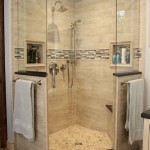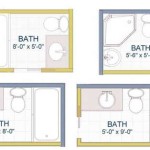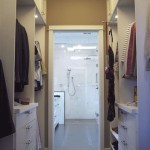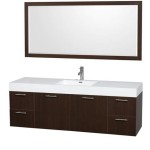How Big Should Bathroom Mirror Be?
When it comes to bathroom design, the mirror is an essential element that serves both functional and aesthetic purposes. Its size plays a crucial role in creating a visually balanced and comfortable space. While there are no strict rules, certain guidelines can help you determine the optimal size for your bathroom mirror.
1. Scale and Proportion
The mirror's size should be in proportion to the bathroom's overall dimensions. A large mirror in a small bathroom can make the space feel cramped, while a small mirror in a large bathroom may appear insignificant. A good rule of thumb is to choose a mirror that is about two-thirds the width of the vanity or wall it is mounted on.
2. Functionality
Consider the mirror's intended purpose. If it is primarily for shaving or putting on makeup, a smaller mirror that provides a close-up view may suffice. However, if you need a full-length mirror to check your outfit or style your hair, you may opt for a larger one.
3. Space Constraints
Be mindful of any space constraints in your bathroom. If there is a limited amount of wall space available, you may need to choose a smaller mirror that fits comfortably within the designated area. Consider the location of other fixtures and furniture to ensure the mirror does not obstruct or clutter the space.
4. Ceiling Height
The height of the bathroom ceiling can also influence the size of the mirror. In low-ceiling bathrooms, a smaller mirror will help maintain a sense of openness and avoid making the space feel oppressive. In high-ceiling bathrooms, a larger mirror can add grandeur and create an illusion of increased height.
5. Shape and Style
The shape and style of the mirror can complement the overall design of the bathroom. A rectangular mirror is a classic choice that provides a clean and modern look. A round or oval mirror can soften the lines of the room and create a more romantic atmosphere. Consider the mirror's frame design and material to match the bathroom's décor.
6. Reflection and Lighting
The size of the mirror can affect the amount of light and reflection in the bathroom. A large mirror can reflect more light, making the space feel brighter and more open. It can also be helpful for tasks that require good lighting, such as applying makeup or shaving. However, too much reflection can create glare and make the bathroom appear cluttered.
7. Personal Preference
Ultimately, the best bathroom mirror size is the one that meets your personal preferences. If you prefer a large mirror that provides a full view, you may opt for one that extends almost the entire width of the vanity. If you prefer a smaller mirror that is more functional for specific tasks or takes up less space, you may choose a smaller size.
Conclusion
Determining the ideal bathroom mirror size involves considering several factors such as scale, functionality, space constraints, ceiling height, shape and style, reflection, and personal preference. By following these guidelines and taking into account your specific bathroom layout, you can choose a mirror that enhances the space both aesthetically and functionally.

Finding The Perfect Fit Navigating Bathroom Mirror Sizes For Your Spa

How Big Should Your Bathroom Mirror Be

How Big Should The Bathroom Mirror Be When Placed Over A Vanity Mirrors Direct

How To Choose The Best Size Mirror Olde Good Things

How To Choose The Perfect Vanity Mirror Ryan S All Glass

Finding The Perfect Fit Navigating Bathroom Mirror Sizes For Your Spa

How Big Should A Bathroom Mirror Be

Should Bathroom Mirror Be Same Width As Vanity Complete Size Guide Home By Alley

How To Pick And Hang The Perfect Bathroom Mirror Roomhints

How To Choose A Bathroom Mirror Houzz Ie







